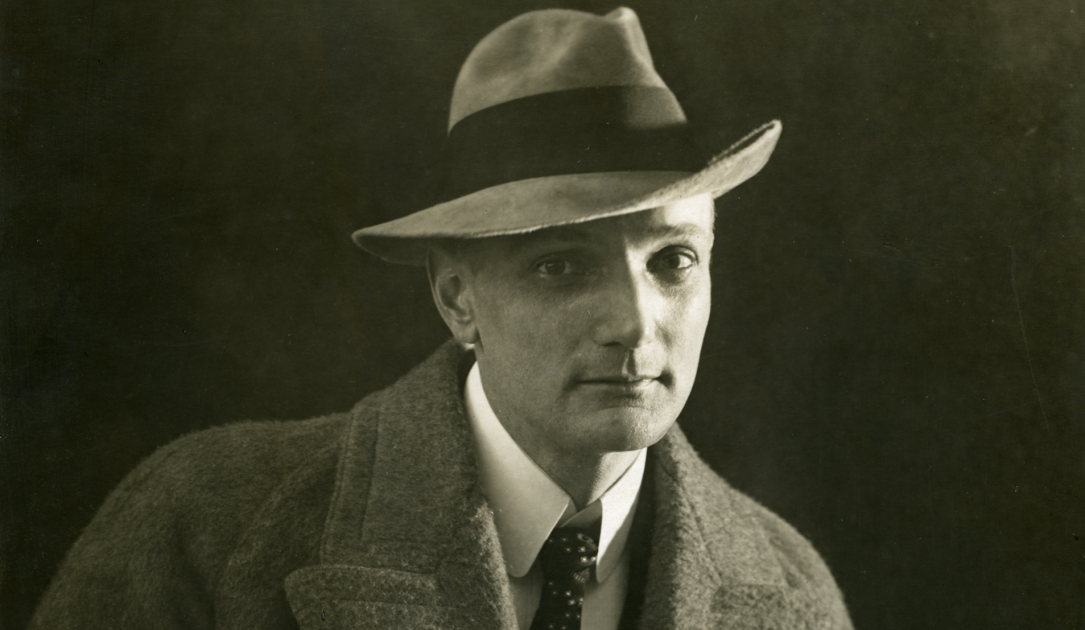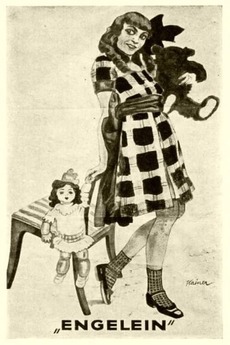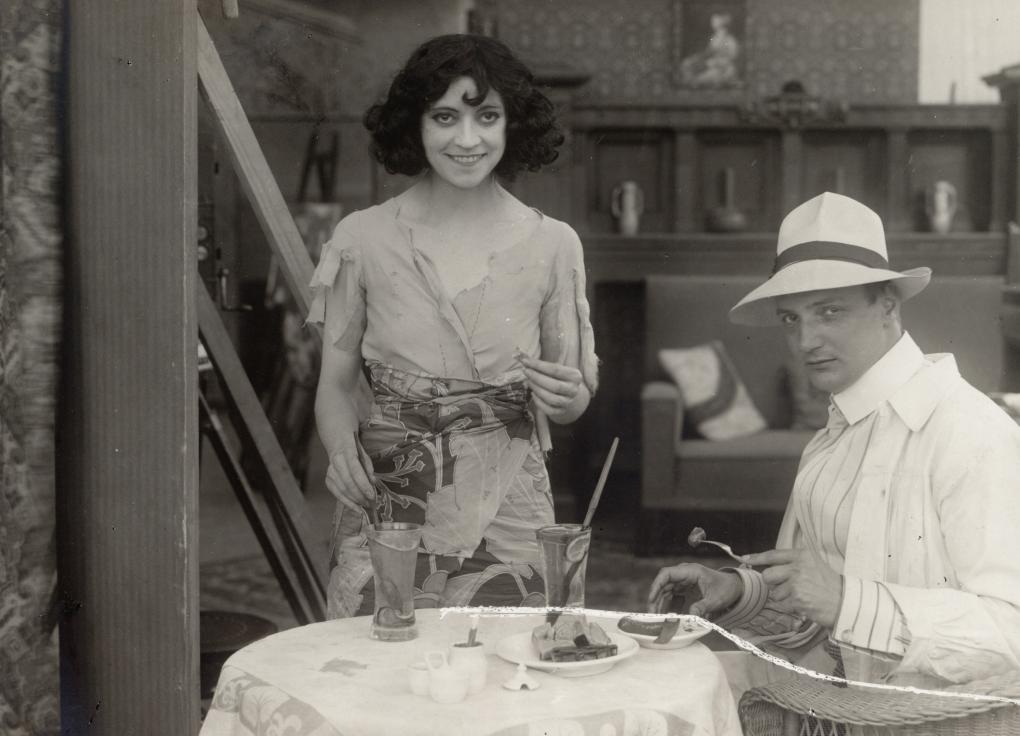Urban Gad: exploring the work of a film pioneer
Um dos melhores acontecimentos do fim do ano -
além do Natal e de todas as festas - é receber as estatísticas do Letterboxd. O
Year in Review é muito esperado pelos cinéfilos. Este ano tive uma surpresa:
meu diretor mais assistido de 2024 foi Urban Gad. Isso tem uma explicação: no
começo do ano mergulhei fundo nos primeiros trabalhos de Asta Nielsen e muitos
destes filmes foram dirigidos por Gad. Agora me volto novamente ao cinema
dinamarquês e a Gad em particular. Vamos conhecer este mestre.
One of the best things that happen when a year ends - besides Christmas and all the parties - is receiving stats from Letterboxd. The Year in Review is much expected by us movie nerds. This year I had a surprise: my most watched director of 2024 was Urban Gad. This has an explanation: in the beginning of the year I dived deep into Asta Nielsen’s early roles and many of these movies were directed by Gad. Now I look again to Danish cinema and to Gad in particular. Let’s meet this master.
Peter Urban Bruun Gad nasceu em 1879 - sua mãe era a dramaturga e mestre em boas maneiras Emma Gad - e faleceu em 1947. Seu segundo filme foi “O Abismo” de 1910 e foi de cara um grande sucesso internacional, algo novo não apenas para o cinema dinamarquês, mas para o cinema em geral. O IMDb lista para Gad 71 filmes como diretor e 36 como roteirista, todos no cinema mudo. É hora de dar uma olhada em alguns deles.
Peter Urban Bruun Gad was born in 1879, his mother being playwright and master of good manners Emma Gad, and died in 1947. His second film was “The Abyss” from 1910 and it was already a big hit internationally, something new not only to Danish cinema, but to cinema as a whole. IMDb lists 71 films as a director and 36 as screenwriter, all in the silent era. Time to take a look at some of them.
De 1911 vem “The Strange Bird / Der Fremde Vogel”. Asta Nielsen estrela como May Mannering, que se apaixona pelo camponês Paul (Carl Cleving) durante as férias. A família dela é contra o relacionamento, então os pombinhos fogem, mas a tragédia os encontra - como o filme anuncia na primeira cartela de texto, trata-se de uma “tragédia de amor”.
From 1911 comes “The Strange Bird / Der Fremde Vogel”. Asta Nielsen stars as May Mannering, who falls in love with the local Paul (Carl Cleving) during a vacation. Her family is against the relationship, so the lovebirds run away, but tragedy hits them - as the film is announced in the main title card, it’s a “love tragedy”.
Também de 1911 é “The Great Moment / In dem großen Augenblick”. O filme traz Annie (Asta Nielsen) às voltas com um dilema: aceitar ou recusar uma proposta para dar sua filha para adoção. Três anos depois de aceitar a proposta, Annie tenta recuperar a criança. É curioso que a adoção também seja o foco de outro filme dinamarquês, “A Garota da Agulha” (crítica em inglês AQUI), indicado a Melhor Filme Internacional no Oscar de 2025. A história do filme recente é ambientada após a Primeira Guerra Mundial, pouco tempo depois de este filme de Gad e Nielsen ter sido feito. Nele, o incêndio no clímax é bem impressionante. Also from 1911 is “The Great Moment / In dem großen Augenblick”. The film revolves around Annie (Asta Nielsen) accepting or refusing to give her baby daughter up for adoption. Three years after she accepts the offer, Annie tries to get her daughter back. It’s curious because adoption was the focus of another Danish film, “The Girl with the Needle”, nominated for Best International Film at the Oscars in 2025. The story of the modern movie is set in the aftermath of World War I, not long after this Gad-Nielsen film was made. In it, the climatic fire is pretty impressive.
Agora algo diferente: uma comédia! “Little Angel / Engelein” nos apresenta a um casal que tem de mentir sobre a idade da filha para garantir uma herança. Mas depois a moça de 17 anos, Jesta (Asta Nielsen), tem de fingir ter apenas 12 anos para seu tio Peter (Max Landa). O problema é que Jesta tem um namorado, Theodor (Fred Immler) e uma cunhada, Meta (Adele Reuter-Eichberg), que está atrás do tio Peter. Esta comédia é bem divertida e prova que Nielsen tem talentos variados. Dois anos depois, sob a direção de Edmund Edel, Nielsen fez uma sequência do filme, chamada “The Guinea Pig”.
Now something different: a comedy! “Little Angel / Engelein” introduces us to a couple who has to lie about their daughter’s age in order to secure an inheritance. But then 17-year-old Jesta (Asta Nielsen) has to pass as a 12-year-old for her Uncle Peter (Max Landa). The problem is that Jesta has a boyfriend, Theodor (Fred Immler), and a sister-in-law, Meta (Adele Reuter-Eichberg), who is after Uncle Peter. This comedy was a lot of fun, proving Nielsen’s many eclectic talents. Two years later, under Edmund Edel’s direction, Nielsen made a sequel to this movie, called “The Guinea Pig”.
Vamos ouvir a opinião do próprio Gad. No primeiro livro dinamarquês sobre teoria do cinema, “Filmen – Dens Midler og Maal” (Filme - Seus Meios e seus Fins), de 1919, ele declarou (tradução minha a partir do inglês): “O ator deve se posicionar entre animais selvagens, ou deve pular e escalar, colocando-se sob risco de cair de grandes alturas, ou saltar de ou para vários meios de transporte a toda velocidade”. Embora tenhamos visto mais melodrama do que outro gênero em sua filmografia, eles com certeza têm momentos de total emoção.
Let’s hear from Gad himself. On the first Danish book about film theory, “Filmen – Dens Midler og Maal” (Film – Its Means and Ends) from 1919, he declared: “The actor must either place himself among wild animals, or he must carry out jumps or climbing feats that put him at risk of plummeting from great heights, or leap from or to various means of transport at full speed”. Although we’ve seen more melodramas from him this time, they sure had their thrills.
Não pude evitar a comparação de Gad com outro mestre do cinema mudo dinamarquês, Benjamin Christensen. Chamado de primeiro autor cinematográfico do país pelo site oficial dedicado ao Cinema Mudo Dinamarquês, Christensen nasceu em 1879, assim como Gad, mas dirigiu apenas 19 filmes. Sua estreia como diretor foi “The Mysterious X” (também conhecido como “Sealed Orders”, 1914), em que ele também foi roteirista e protagonista. Christensen interpreta o tenente Van Hauen, cuja esposa (Karen Sandberg) é assediada pelo espião Conde Spinelli (Hermann Spiro), que rouba alguns documentos confidenciais de Van Hauen e trama para acusá-lo de traição. No que é provavelmente o primeiro MacGuffin do cinema, um elefante de papel domina sonhos e causa discórdia.
I couldn’t avoid comparing Gad with another master of the Danish silent screen, Benjamin Christensen. Called the first real author of Danish cinema by the website dedicated only to Danish Silent Film, Christensen was born in 1879, like Gad, but directed only 19 titles. His directorial debut was “The Mysterious X” (also known as “Sealed Orders”, 1914), that he also co-wrote and starred in. Christensen plays the lieutenant Van Hauen, whose wife (Karen Sandberg) is being courted by the spy Count Spinelli (Hermann Spiro), who steals some top secret papers from Van Hauen and frames him to be found guilty of treason. In what is probably cinema’s first MacGuffin, a paper elephant dominates dreams and causes mayhem.
As carreiras de Urban Gad e Asta Nielsen estavam intimamente ligadas. Eles eram mais que uma dupla dinâmica de diretor e atriz como D. W.Griffith e Lillian Gish, eles formaram um casal 20 antes de Mary Pickford se casar com Douglas Fairbanks e criar o conceito de super casal. Contemporâneos de outra dupla, os comediantes John Bunny e Flora Finch, Gad e Nielsen eram algo completamente novo no cinema da época.
The careers of Urban Gad and Asta Nielsen were totally connected. They were more than a dynamic duo of director and actress - like D.W. Griffith and Lillian Gish, they were a power couple even before Mary Pickford married Douglas Fairbanks and invented the concept of power couple in cinema. Contemporary to another duo, the comedians John Bunny and Flora Finch, Gad and Nielsen were something completely new in cinema in their time.
Vou repetir a conclusão do meu já mencionado artigo sobre o início de carreira de Asta Nielsen: o Primeiro Cinema - de 1895 a 1915 - é tão comumente desprezado, mas não deveria ser. Tragicamente, a maior parte dele se perdeu, mas cada pérola que encontrarmos deste período deve ser vista, discutida e apreciada.
I’ll repeat here the conclusion of my aforementioned article about Asta Nielsen’s early career: early cinema - or the First Cinema, from 1895 to 1915 - is so often taken for granted and overlooked but it shouldn’t be. Tragically most of it is lost, but every gem we can find from this period should be seen, discussed and enjoyed.
Classic Film and TV Corner.






3 comments:
Fantastic piece, Le. Thanks so much for the introduction to Urban and his films. Loved learning about his screen partnership with Asta.
So glad you could join the Blogathon. Hope all good with you.
Maddy from Classic Film And TV Corner
This sounds like a partnership that made magic. Ah, to be a movie-goer back in the day to see these films when they were first released...!
The elephant visual is really cool. They really did some amazing things in these early movies.
Post a Comment